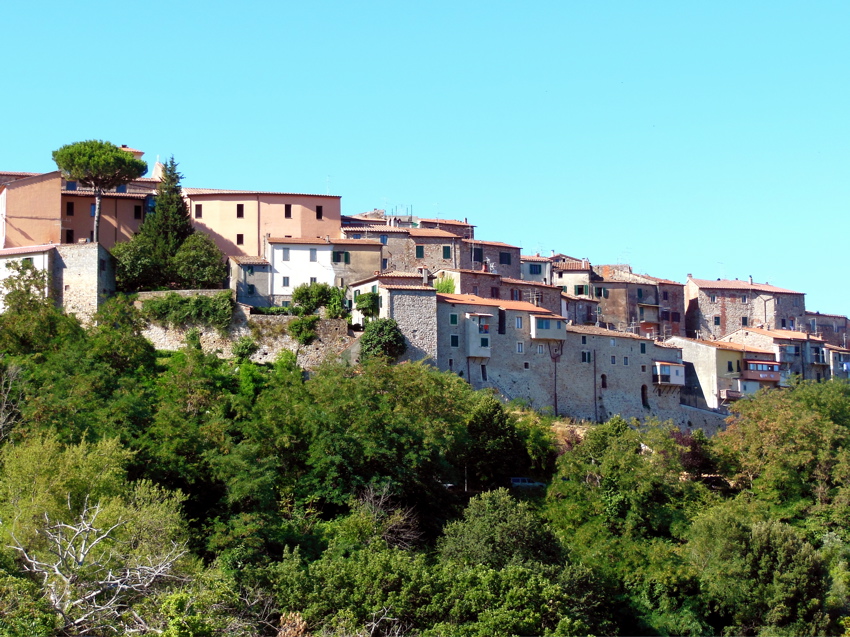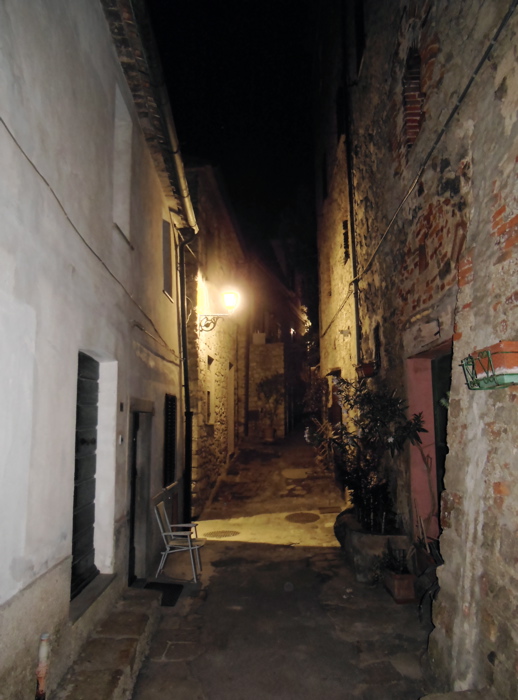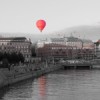
The hillside village of Gavorrano in the afternoon. © Erin Zaleski 2012
Sweden is in the grip of its chilliest, rainiest summer in centuries, and shortly after my arrival in late-May I began pining for Mediterranean heat, sun-baked terraces, and humid evenings laced with ice cream and strapless dresses.
So in July I fled south to Gavorrano, Italy.
Never heard of it, have you?
Neither had I, which I immediately took as a good sign.
Straddling a steep hillside in southern Tuscany’s Maremma about 25 miles northwest of Grosseto, the medieval mining village is free of grand hotels, “menus turisticos,” chain stores, and gourmet gelaterias (basic, perfectly tasty gelato is available at the local bar). When the midday sun is at its hottest the main square and nearby roads empty out; the sounds of voices and footsteps replaced with the buzz of cicadas and the mistral wind barreling over the hills.
It was as middle of nowhere as you could get for Tuscany in July, thrillingly devoid of the summer tourist crush, and with the bonus of the exciting (and alarming) possibility of running into a pack of wild boar after dusk.
Small family-run hotels or agroturisimo offer lodgings options, but my boyfriend and I rented an apartment from friends. From the terrace the view reached all the way to the sea, and on clear mornings you could even glimpse the shadowy outlines of the islands of Elba and Corsica just beyond.
Our days were consumed with road trips–to the beach, to neighboring towns, or to larger cities like Florence or Sienna–and our evenings were spent in the village either enjoying a meal on the apartment terrace, or gorging on fresh pasta, seasoned boar meat, and homemade ice cream at L’Etruso Trattoria. More than once we made our way to Osteria Il Fanta–an eatery paying homage to Magritte complete with menus and business cards featuring a replica of the famous pipe and the declaration “ceci n’est pas un restaurant” just below.
On some evenings we would walk past the small crowds in the town square to explore the village. Aside from the occasional burst of laughter from an open window, the streets behind Gavorrano’s old walls are devoid of human presence at night, and the weathered facades looming above them evoke an outdoor medieval museum or a derelict film set.
Wandering through deserted passageways, you half expect to cross paths with the ghost of Pia dè Tolomei, the tragic 13th-century noblewoman and second wife of nasty, caddish Count Nello of Pannocchieschi. Bent on marrying his mistress, Count Nello is believed to have imprisoned his wife in Gavorrano’s Castel di Pietra before flinging her from one of the castle’s windows. The castle has since been reduced to ruins, but Pia achieved immortality when Dante paid homage to her plight in the fifth canto of “Purgatorio.”
By the time we left, I had become accustomed to the rhythms of village life: the group of elderly men who congregated on the benches near the square each morning, the bells of Pieve di San Giuliano announcing the hour, the indignant nocturnal howling of neighboring dogs at errant wild boars tromping through our back garden.
My boyfriend is already talking about going back–maybe in the autumn or the spring–and I confess that several recent daydreams have been tinged with a precious and somewhat embarrassing “Under the Tuscan Sun” quality involving medieval cottage renovations, Underwood typewriters, and overpriced olive oil decanters.
But as the world gets smaller, so does the opportunity for authenticity in one’s journeys, especially to heavily-trafficked countries like Italy. In Sienna and Cinque Terre, for instance, international tourists outnumbered local residents, English menus were displayed outside of restaurants, and global chain stores were as common as the smaller boutiques. It can get depressing to travel to some of the world’s most celebrated landscapes only to be met with a refrain of garish sameness.
Places like Gavorrano have thus far escaped the encroachment of globalization. And it’s comforting to know that if I do go back in the spring or the fall, the handful of summer tourists will have departed and the air may be a bit cooler, but otherwise the village will remain unchanged.
After 10 days spent plowing through multiple books, sleeping late, and drinking way too much prosecco–il dolce far niente at its best–I am reminded that the pleasure of traveling is not always derived from chasing adventure or whirling from one place to the next trying to cram in as many experiences as possible.
Equally thrilling are the discoveries of those timeless, somewhat-hidden places where you can just be still and disappear.






No Comments